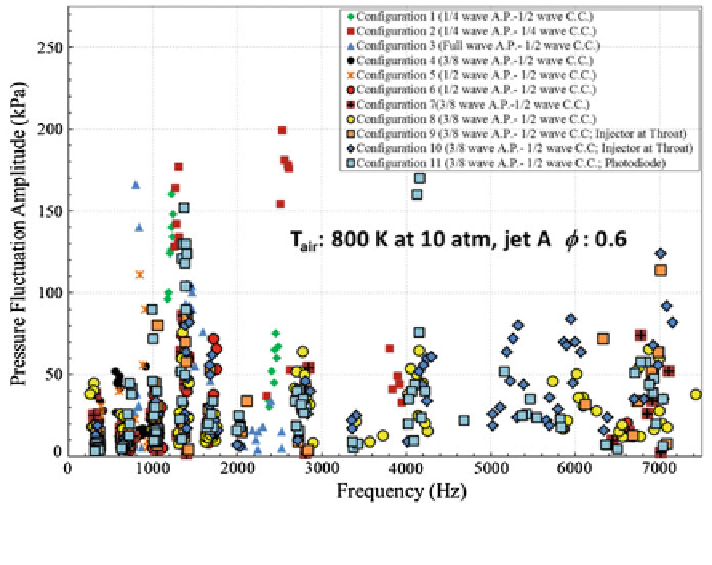Environmental Engineering Reference
In-Depth Information
Fig. 56 60
0
single element SV-LDI dynamic investigations in a flametube conducted by Prof. Bill
Anderson
'
s group; reproduced from Gejji et al. (
2014
)
10 Summary
This article gives an overview of the current rich-dome combustion system design,
requirements, challenges, three alternatives to rich domes, lean dome NO
x
entitle-
ment, alternative fuels, operability, dynamics, and accuracy level expectations from
modeling and engineering correlations. Limited by the page count normally asso-
ciated with any article, the most of the material presented here is from the author
s
personal experience; and this should not be misinterpreted by the reader for lack of
relevance and/or respect for the outstanding quality works being conducted by the
numerous combustion research,
'
technology, and product development
teams.
Several large low-NO
x
rich domes
'
takeoff EINO
x
is reproduced well by a simple
w
R
0303PR
1
:
9722
correlation EINO
xRD
L
¼
0
:
2
¼
0
:
9906 including Talon II and
Trent1000. However, the LTO NO
x
is correlated well by a similarly good quality
curve only for
the group of
combustors without Trent1000, DP
=
F
00
¼
6793PR
1
:
2241
0
:
compared to lower value expression for Trent1000 alone
1292PR
1
:
6327
. Consistent with the NO
x
stringency pattern set by
CAEP4, CAEP6, and CAEP8 and longtime goal for achieving 85 % reduction in
takeoff NO
x
DP
=
F
00
¼
0
:
at 30 OPR, we propose the long-term LTO regulatory standard of
CAEP
=
18
¼
37
:
763
þ
2
p
effective December 31, 2033.

Search WWH ::

Custom Search